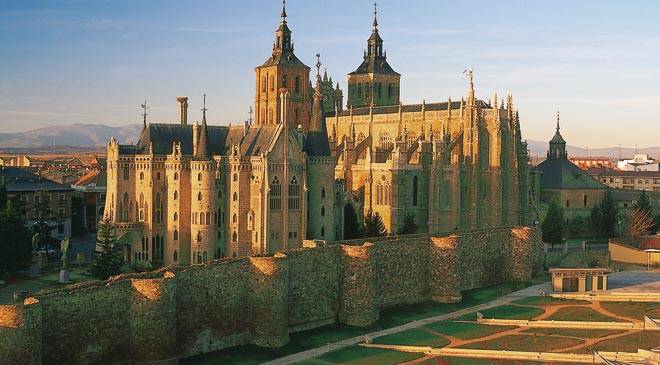
Astorga is the place where two of Spain's most important cultural routes converge: the Way of Saint James and the Silver Route. With over 2,000 years of history, this city in Castile-León is home to a surprising monumental site, where Renaissance cathedrals and Roman baths jostle with the modernism of Gaudí.
To discover Astorga you have to head for the province of León, in northwestern Spain. It is located just 45 kilometres from the city of the same name, León, in a region known as La Maragatería. After being conquered by the Romans, the town became an important strategic centre, mainly on account of the area's wealth in deposits of gold. The heritage of that period and the remains of the mines themselves are some of the attractions you will find in Astorga, but not the only ones.
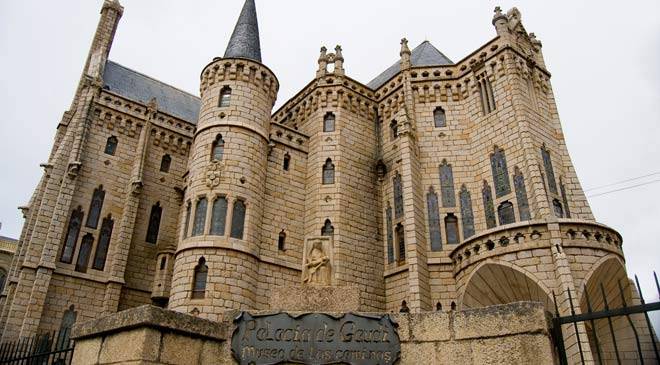
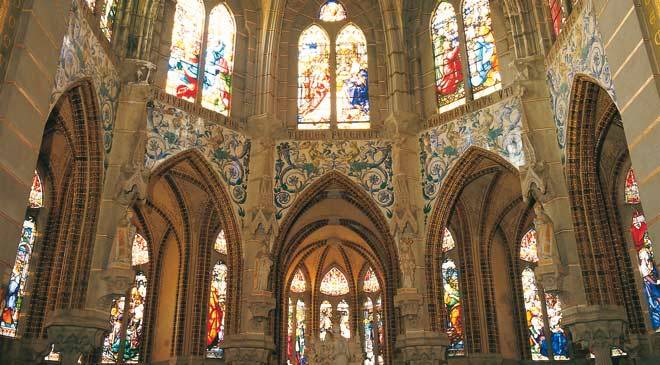
The first thing you will notice when you get to the town is the view of two of its most important monuments, Santa María Cathedral and the Episcopal Palace. The two buildings are set side by side and are surrounded by a Roman defensive wall which is in an excellent state of conservation. Take a close look, because the Cathedral is a beautiful synthesis of styles, with elements ranging from Florid Gothic to Baroque and Renaissance. This is because construction work began in the 15th century and was not completed until the 18th. Another unusual aspect is the difference in colour of the two towers that flank the main entrance - one of them was affected by an earthquake in 1775 and took longer to be finished. Inside, be sure to admire the stunning main altarpiece and choir stalls.
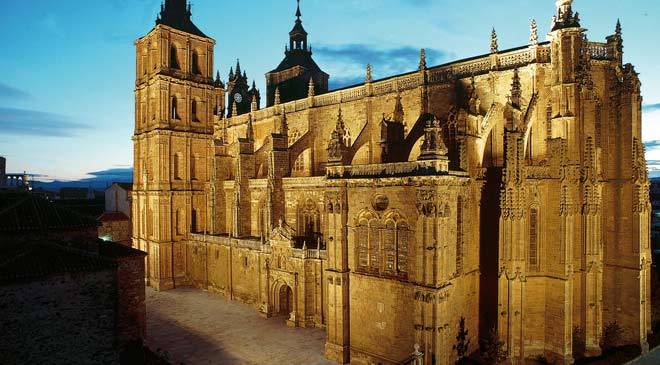
Beside the Cathedral is the Episcopal Palace, designed by the famous modernist architect Antonio Gaudí. It is a neo-gothic building that looks like something out of a fairy tale. In the garden outside you will be welcomed by three angels in zinc, and inside you can visit the Los Caminos Museum, which has an interesting collection of items related with the Way of Saint James. Astorga is home to other interesting buildings, such as Casa Granell House and San Andrés Church.
Next, head for Plaza Mayor Square where you will find the baroque Town Hall and a traditional street market held every Tuesday morning. A visit to the town's Roman remains is also not to be missed. You will find remains of the forum, thermal baths, "domus" (houses), the imperial temple, the camp of the legion and the drainage network. In the ancient Ergastula (prison) you will now find the Roman Museum with statues, amphorae, jewellery and reliefs. To make sure you see everything, it is best first to visit the town's Tourist Office.
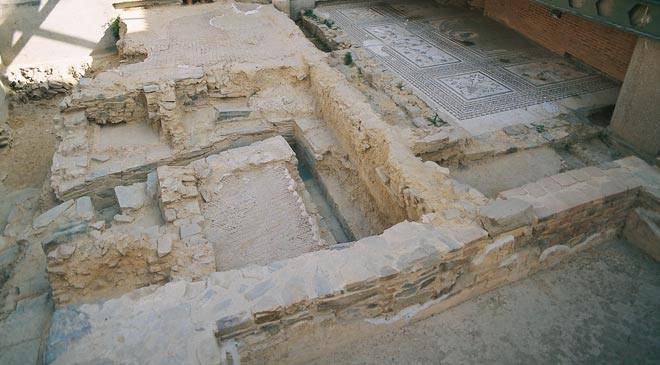
If you have more time, head out to one of the surrounding villages and discover the charm and character of the traditional architecture of the La Maragatería region. Castrillo de los Polvazares, for example, just 5 kilometres from Astorga, is home to a good representation, and we would also recommend you try the typical dish of the region: maragato casserole. You can also do the “Gold Route”, that will take you to different villages around the region in search of ancient Roman mines. Be sure to make a stop to discover Astorga. You will be pleasantly surprised.